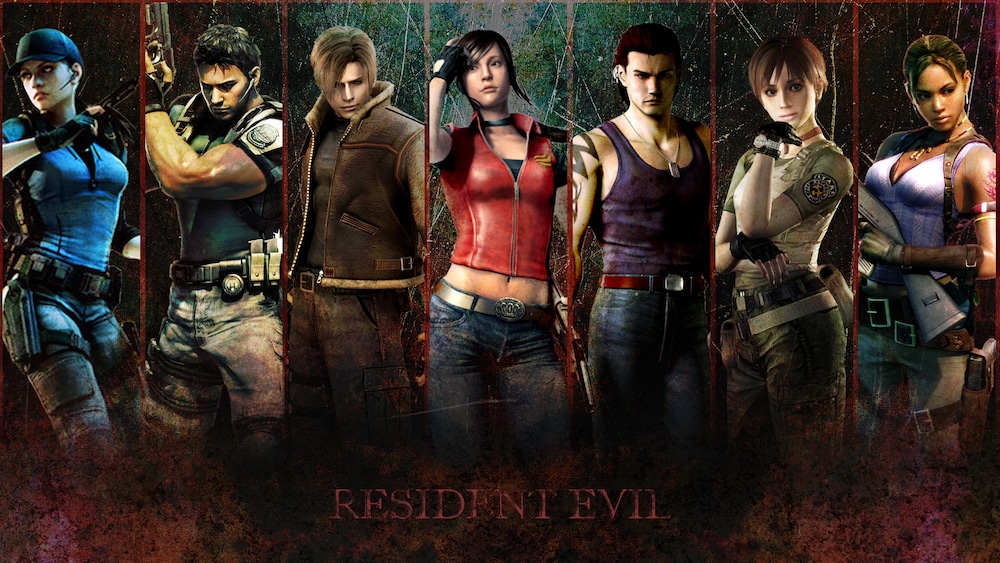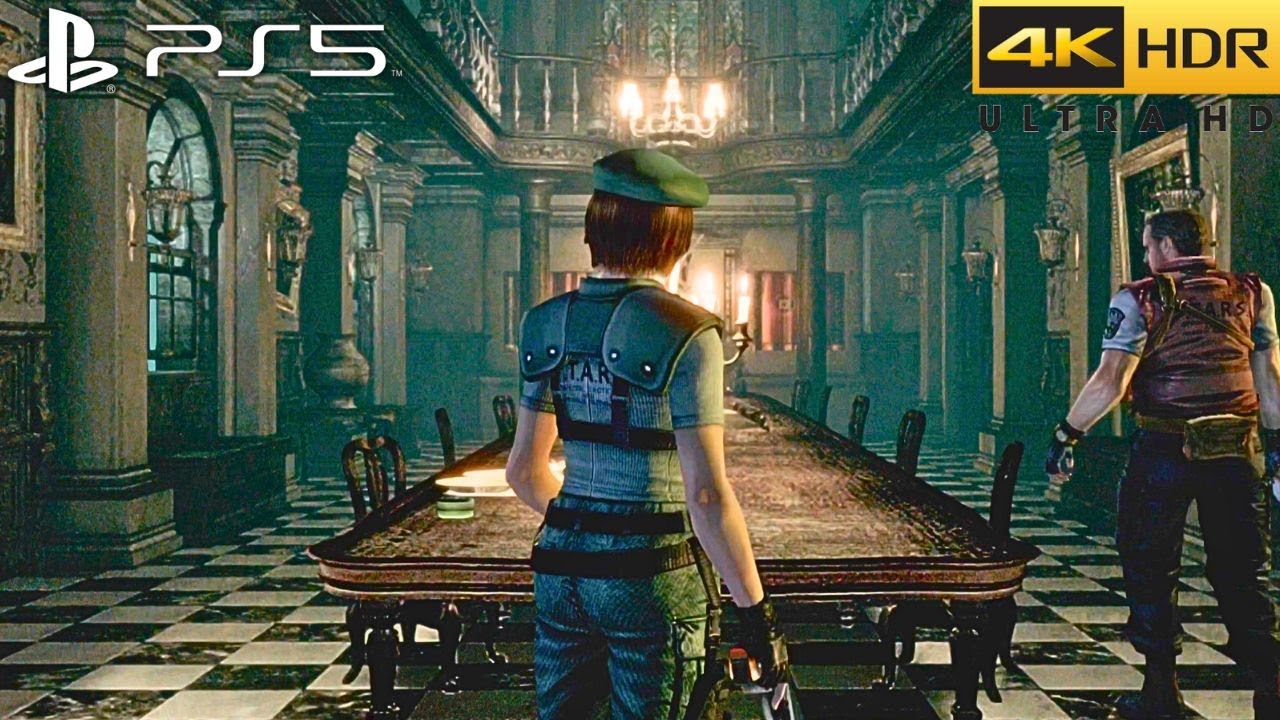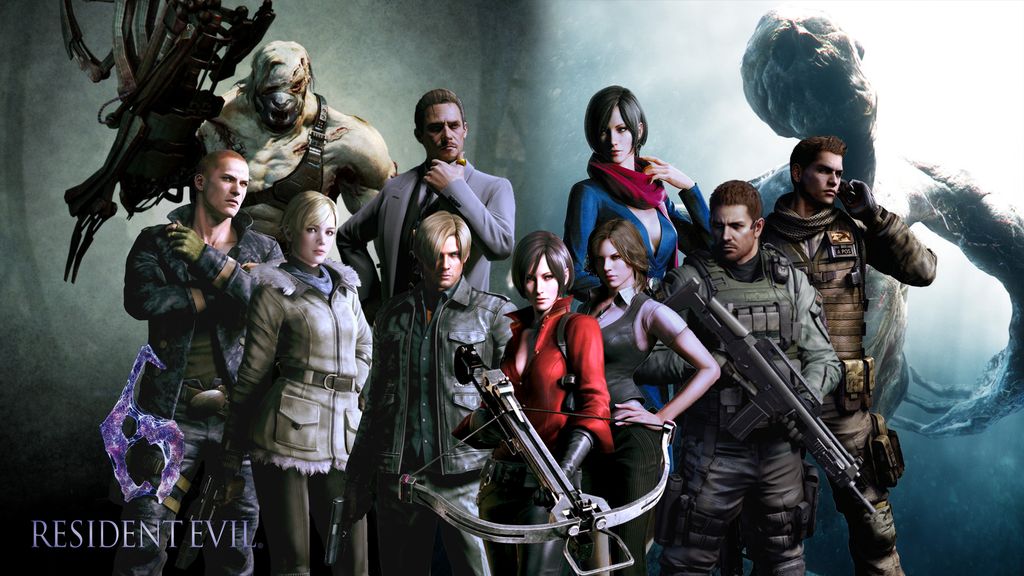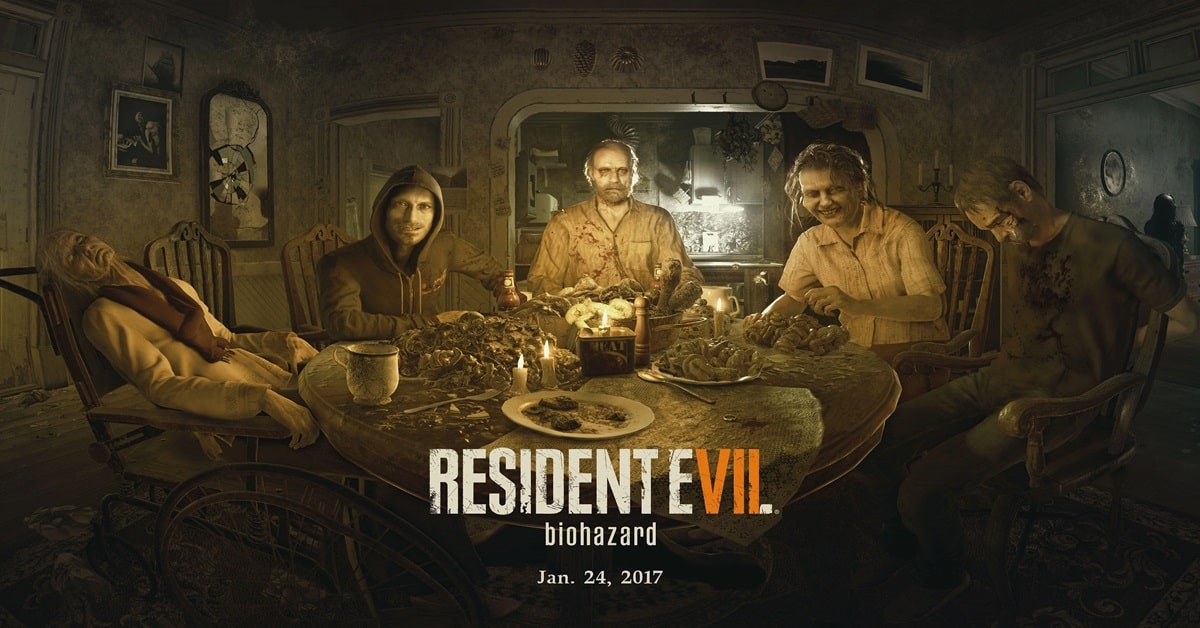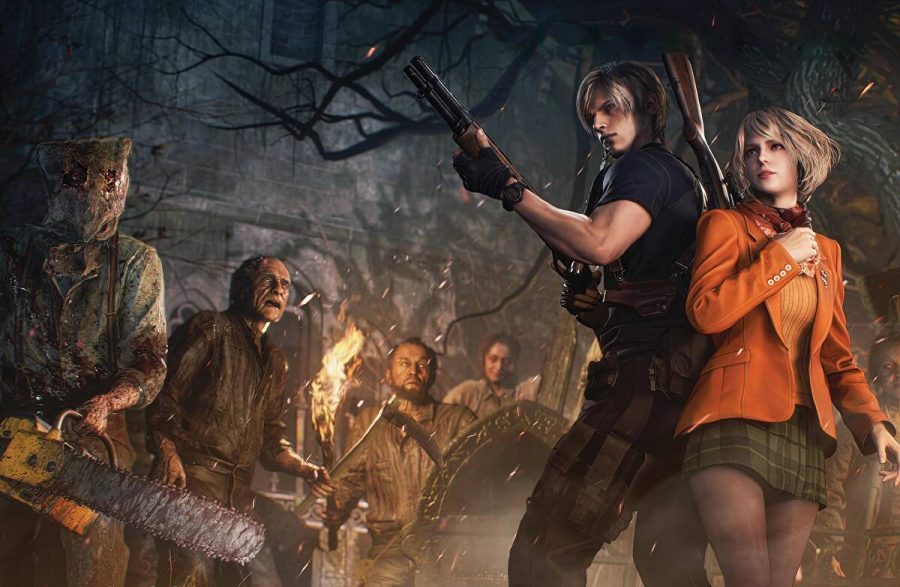Released in 1996 for the first time, Resident Evil is often regarded as one of the most influential and enduring games in the survival horror genre. Developed and published by Capcom, this game pushed the boundaries of what video games could deliver in terms of atmosphere, storytelling, and gameplay, laying the groundwork for an entire subgenre that would go on to dominate the gaming industry. With its eerie setting, intricate puzzles, and terrifying enemies, Resident Evil set a new standard for how to blend action, horror, and narrative into a cohesive and unforgettable experience.
The Beginning: A Deadly Mystery Unfolds
The game opens with a chilling atmosphere right from the start. Players are introduced to the S.T.A.R.S. (Special Tactics and Rescue Service) team, a group of elite police officers tasked with investigating a series of grisly murders on the outskirts of Raccoon City. The game’s protagonists, Jill Valentine and Chris Redfield, are members of this team. As the story progresses, the team quickly discovers that these murders are not just the work of a maniac, but are part of a larger, far more sinister plot orchestrated by a pharmaceutical company—Umbrella Corporation.
The investigation leads the team to a mysterious mansion on the outskirts of Raccoon City, which is shrouded in secrecy and surrounded by rumors of strange occurrences. Upon entering the mansion, the S.T.A.R.S. team members quickly realize that something is terribly wrong. The mansion is crawling with zombies, monstrous creatures, and deadly traps, and the group’s members are soon separated. From there, the player’s journey begins, and the game shifts between survival, exploration, and puzzle-solving.

Entering the Mansion: A World of Terror
The atmosphere in Resident Evil is arguably its most defining feature. As players navigate the sprawling mansion, the ambient soundtrack—a blend of haunting strings and unsettling silence—adds to the unease. The game's fixed camera angles and limited controls only heighten the sense of claustrophobia and dread, forcing players to be strategic with their movements and actions.
As players venture deeper into the mansion, they come across a series of disturbing discoveries. These include bloodstains, horrific experiments, and cryptic notes written by the mansion’s previous inhabitants. The plot slowly begins to unfold, revealing the true horrors at the heart of the mansion.
One of the most memorable aspects of the game is the constant tension between exploration and survival. Players are tasked with navigating through the mansion's various rooms, solving intricate puzzles, and finding keys and items that unlock new areas. But, these tasks aren’t as simple as they seem—monsters lurk around every corner, and ammo and health items are scarce. As a result, managing resources becomes a critical part of the gameplay. The fear of running low on supplies while facing off against increasingly formidable enemies forces players to be tactical in their approach.
The Terrifying Enemies
The enemies in Resident Evil are some of the most iconic in the history of video games. The undead are the primary threat in the game, but they are far from the only menace. From the slow-moving, decaying zombies that shuffle through the hallways to the faster, more aggressive creatures like the lickers and giant spiders, every encounter is designed to keep players on the edge of their seat. Each type of enemy requires a different approach to defeat, adding variety to the gameplay and forcing players to adapt their strategies on the fly.
The game’s standout enemy is, of course, the Tyrant. A towering, unstoppable bio-organic weapon that stalks the player throughout the mansion, the Tyrant is an absolute force of nature. Encountering it for the first time is an unforgettable moment in gaming, as its sheer size and power create an overwhelming sense of terror.
Unraveling the Mystery: The Umbrella Corporation
As the game progresses, players uncover the horrific truth about the mansion and its connection to Umbrella Corporation. The mansion serves as a front for a series of covert experiments that involve the creation of biological weapons. These experiments, however, have gone horribly wrong, and the mansion is now overrun with monstrous creatures as a result. The player discovers that the mansion's owner, Dr. James Marcus, had been conducting research on a virus that could turn humans into obedient, superhuman soldiers. The project was abandoned after a series of disastrous events, but the creatures left behind still roam the mansion, deadly and unpredictable.
As Jill or Chris, players are tasked with not only surviving but uncovering the truth behind the experiments and stopping the spread of the virus. They are up against a time limit, however, as the mansion is set to self-destruct in order to contain the virus. The pressure to escape adds to the already intense atmosphere, as players must not only fend off monsters but also solve puzzles and find the necessary keys to progress.
The Final Showdown
The climax of Resident Evil takes place in the laboratory deep beneath the mansion. After surviving countless enemies and solving complex puzzles, players confront the true mastermind behind the disaster: Albert Wesker, a former S.T.A.R.S. team member who secretly works for Umbrella Corporation. Wesker’s betrayal comes as a shock to the player, as his true motivations are revealed.
In the final battle, the player faces off against Wesker, who has injected himself with the same virus that has turned the mansion’s inhabitants into monsters. The battle is intense, and the stakes are high. Wesker’s strength and speed make him a formidable opponent, but with the right strategy, the player can bring him down and prevent the viral outbreak from spreading further.
Gameplay and Mechanics: A Template for the Genre
At its core, Resident Evil features classic survival horror gameplay. The fixed camera angles are one of the most iconic features of the game, and while they may feel a bit awkward at times, they create a sense of unease and tension that wouldn’t be possible with a more traditional third-person perspective. The limited inventory system forces players to prioritize their items carefully, as they can only carry a set number of weapons and healing items at any given time. This design decision heightens the tension and adds another layer of strategy to the gameplay.
Another standout mechanic in Resident Evil is the use of puzzles. The game is full of complex riddles and hidden pathways, which require players to think critically in order to progress. These puzzles are often tied to the environment and the narrative, making them feel like an integral part of the experience rather than a separate element.
The combat, on the other hand, is relatively simple by today’s standards but remains effective. Ammunition is scarce, so every shot must count, and the tension that builds from trying to conserve resources while dealing with enemies is a hallmark of the Resident Evil experience. Whether it’s running past zombies to conserve ammo or taking out enemies strategically with limited supplies, the combat in Resident Evil forces players to think and act with caution.
The Legacy of Resident Evil
Resident Evil remains a cornerstone of the survival horror genre, not just for its gameplay but also for its deep impact on gaming culture. The game was groundbreaking in its ability to blend traditional horror elements with innovative gameplay mechanics, and it paved the way for future titles in the series as well as other survival horror franchises like Silent Hill.
The success of Resident Evil also led to a long-running and highly successful franchise, including sequels, spin-offs, novels, movies, and even a dedicated fanbase. Each installment in the series has built on the foundation laid by the original game, expanding the lore and introducing new gameplay mechanics. However, none of the sequels have quite captured the raw tension and atmosphere that the original Resident Evil brought to the table.
In the years following its release, Resident Evil has been re-released on a variety of platforms, and its influence can be seen in countless games that followed. The game has had a lasting impact on not just survival horror but on the entire gaming industry. It introduced a unique blend of action and horror, which many games have tried to replicate, but few have succeeded in doing so as effectively as Capcom did in the original.

A Complete List of All Resident Evil Games:
1. Resident Evil (1996)
Platform: PlayStation, Sega Saturn, PC, GameCube, PS4, Xbox One, Switch
The original Resident Evil laid the groundwork for the survival horror genre. Set in a mansion on the outskirts of Raccoon City, players control either Jill Valentine or Chris Redfield as they try to uncover the secrets of the mansion and the Umbrella Corporation’s sinister experiments. The game introduced the now-iconic fixed camera angles, tension-building sound design, and limited resources that became staples of the franchise. Players must solve puzzles, survive attacks from horrifying creatures, and navigate dangerous areas while managing their inventory. Its atmosphere, shocking plot twists, and deep sense of isolation made it a revolutionary title that defined survival horror in the gaming world.
2. Resident Evil Director’s Cut (1997)
Platform: PlayStation
Released a year after the original game, Resident Evil: Director’s Cut featured updated controls, new gameplay modes, and additional content like altered enemy placement and difficulty settings. The arranged mode presented randomized enemy placements and item locations, which significantly increased the replay value. This version aimed to fine-tune the original’s mechanics while providing a more polished experience. Despite its minor adjustments, it retained the same core gameplay and story, making it a must-have for hardcore fans of the original game.
3. Resident Evil 2 (1998)
Platform: PlayStation, later re-released on Dreamcast, PC, GameCube, and modern platforms (PS4, Xbox One, Switch)
Resident Evil 2 expanded on the original’s formula by introducing two playable characters, Leon S. Kennedy and Claire Redfield, who each have their own unique storylines. The game takes place in Raccoon City as the T-virus outbreak devastates the city and transforms its inhabitants into terrifying zombies. Players explore the Raccoon City Police Department, as well as surrounding areas, solving puzzles and battling zombies, mutated creatures, and the horrifying Mr. X. The introduction of the "dual campaign" system (playing through each character’s scenario) provided significant replay value. Its technical advancements in graphics and gameplay systems made it an iconic survival horror title that pushed the franchise into the mainstream.
4. Resident Evil 3: Nemesis (1999)
Platform: PlayStation, later re-released on Dreamcast, GameCube, PC, and modern platforms
Set in the aftermath of Resident Evil 2, Resident Evil 3: Nemesis follows Jill Valentine as she attempts to escape the city overrun by the zombie virus. The game introduced the relentless Nemesis, a bio-engineered monster that pursues Jill throughout the game. This addition heightened the tension and urgency, as Nemesis could appear at any moment to attack the player. It was also the first Resident Evil title to incorporate real-time combat mechanics, such as dodging. The game emphasized action while maintaining the horror elements, offering a more intense and fast-paced experience compared to earlier titles.
5. Resident Evil CODE: Veronica (2000)
Platform: Dreamcast, later re-released on PS2, GameCube, and PC
This entry marked a major departure from previous Resident Evil titles by featuring fully 3D environments and more expansive locations. The story follows Claire Redfield as she searches for her brother, Chris, who has been captured by the Umbrella Corporation. CODE: Veronica deepens the lore surrounding Umbrella’s experiments, introducing new characters like Steve Burnside and Albert Wesker. The narrative takes players across various locations, from an isolated island to a high-tech Umbrella facility. While its graphics and gameplay improvements were praised, CODE: Veronica was also notable for its emphasis on traditional survival horror, with limited ammo and resource management.
6. Resident Evil 4 (2005)
Platform: GameCube, later re-released on PS2, PS3, PS4, Xbox 360, Xbox One, Switch, and PC
Resident Evil 4 is one of the most influential games in the franchise and in video game history. This entry marked a drastic shift in gameplay style, moving away from fixed camera angles and tank controls to an over-the-shoulder, third-person perspective. Players control Leon S. Kennedy, who is sent to rural Spain to rescue the U.S. president’s daughter, Ashley. Along the way, he faces off against infected villagers and mutated creatures. The game’s increased focus on action and combat, combined with quick-time events and new gameplay mechanics (such as upgrading weapons), set a new standard for modern survival horror games. Resident Evil 4 was critically acclaimed for its fluid controls, intense atmosphere, and innovative gameplay, and is considered one of the best games ever made.
7. Resident Evil 5 (2009)
Platform: PlayStation 3, Xbox 360, later re-released on PlayStation 4, Xbox One, and PC
Resident Evil 5 continues the action-oriented gameplay established in Resident Evil 4, introducing cooperative play for the first time in the series. Players control Chris Redfield and Sheva Alomar as they investigate a bioterrorist threat in Africa. The game features more intense combat, with a heavier emphasis on shooting, large-scale set pieces, and team-based mechanics. While its fast-paced action was well-received, the title faced criticism for moving too far away from the survival horror elements that made earlier titles iconic. Nonetheless, Resident Evil 5 became a commercial success, further establishing the franchise’s shift toward action.
8. Resident Evil 6 (2012)
Platform: PlayStation 3, Xbox 360, PC, later re-released on PS4, Xbox One
Resident Evil 6 took the action-oriented gameplay of Resident Evil 5 even further, offering players four distinct storylines that followed characters like Leon, Chris, Jake (Albert Wesker's son), and Ada Wong. The game blended survival horror, action, and even stealth mechanics, offering varied gameplay experiences across the four campaigns. Despite its ambitious scope, Resident Evil 6 received mixed reviews, with some praising the variety of content, while others criticized its convoluted story and lack of focus on horror. Nonetheless, it was a commercial success, though it was seen as a turning point in the series’ evolution towards action-heavy gameplay.
9. Resident Evil 7: Biohazard (2017)
Platform: PlayStation 4, Xbox One, PC, PlayStation VR, later re-released on PS5, Xbox Series X/S
After the action-heavy Resident Evil 6, Resident Evil 7 marked a return to the survival horror roots of the franchise. The game is set in a decaying plantation in rural Louisiana, where players control Ethan Winters as he searches for his missing wife. The game is presented in first-person perspective, adding to the immersion and tension as players explore the eerie environments. The terrifying Baker family and their grotesque actions were central to the game’s horror elements. Resident Evil 7 revitalized the series, with its return to psychological horror, limited resources, and claustrophobic spaces. It also introduced virtual reality support, making the game even more terrifying in VR.
10. Resident Evil Village (2021)
Platform: PlayStation 5, PlayStation 4, Xbox Series X/S, Xbox One, PC, Stadia
Resident Evil Village is a direct sequel to Resident Evil 7, continuing Ethan Winters' journey to rescue his kidnapped daughter. Set in a mysterious European village, the game features multiple terrifying enemies, including Lady Dimitrescu, whose towering figure became a viral sensation. While Resident Evil Village retained the first-person perspective and many of the horror elements from Resident Evil 7, it also incorporated more action and exploration, with larger environments and more combat-focused gameplay. The game was praised for its visuals, story, and diverse cast of villains. It also marks a shift toward more fantasy horror elements, blending supernatural creatures like vampires and werewolves with the traditional bio-horror themes of the series.
11. Resident Evil Re:Verse (2021)
Platform: PlayStation 4, Xbox One, PC, Stadia
Resident Evil Re
is a multiplayer spin-off released alongside Resident Evil Village. The game allows players to control iconic characters from the series (such as Leon, Jill, Chris, and others) in short, action-packed matches where they battle each other using unique abilities. While it offers a fun, arcade-like experience, it received mixed reviews for its shallow gameplay and lack of meaningful progression. It was primarily designed as a bonus for players who purchased Resident Evil Village, but its reception was lukewarm, and it didn’t make as significant an impact as the main entries.
12. Resident Evil 4 Remake (2023)
Platform: PlayStation 4, PlayStation 5, Xbox Series X/S, PC
The Resident Evil 4 Remake was highly anticipated due to the immense legacy of the original game. This version was built from the ground up, offering updated visuals, improved controls, and expanded story elements. While the core gameplay of Resident Evil 4 remained intact, the remake refined mechanics, added new features, and improved character depth, particularly for Leon and Ashley. The game keeps the balance of action and horror that made the original so beloved while modernizing it for a new generation of players. The Resident Evil 4 Remake received critical acclaim for its stunning visuals, atmospheric changes, and exciting gameplay, solidifying its place as one of the best entries in the franchise.
Upcoming: Resident Evil 9 (TBD, Likely 2024/2025)
While there is no official title yet for Resident Evil 9, Capcom has confirmed that development is underway, with a release expected possibly by 2025. Details about the game remain sparse, but it is expected to continue the story from Resident Evil Village, following Ethan Winters' journey or possibly introducing a new protagonist. The game is expected to maintain the first-person perspective introduced in Resident Evil 7 and Village while exploring new horror elements and expanding the series' lore.
Final Remarks
The Resident Evil franchise is known for its adaptability and evolution over time, with each game bringing something new to the table, whether it’s a shift in gameplay style, visual improvements, or deeper exploration of the series’ lore. From survival horror roots to action-packed sequences and multiplayer modes, Resident Evil remains one of the most influential and beloved gaming franchises in history.
Game Information:
- Genre: Survival Horror
- Year: 1996
- Platforms: PlayStation, Sega Saturn, PC, GameCube, and various re-releases on modern platforms
- Ratings: 9/10 (IGN), 94% (Metacritic), 8.5/10 (GameSpot)
- Game Mode: Single-player
- Company: Capcom
- Awards: 1996 E3 Best Action Game, Best Horror Game by GamePro
- Is It Worth Playing?: Absolutely. The original Resident Evil is a must-play for anyone interested in the history of survival horror. Its atmospheric tension, engaging puzzles, and memorable enemies have stood the test of time. It is a definitive piece of gaming history that any fan of the genre should experience.
Our Personal Rating: 9/10 - A classic in every sense of the word, Resident Evil offers a unique and thrilling experience that shaped an entire genre. While it may feel dated by modern standards, its influence cannot be overstated. Whether you're revisiting it or playing for the first time, it’s a game that is well worth your time.

